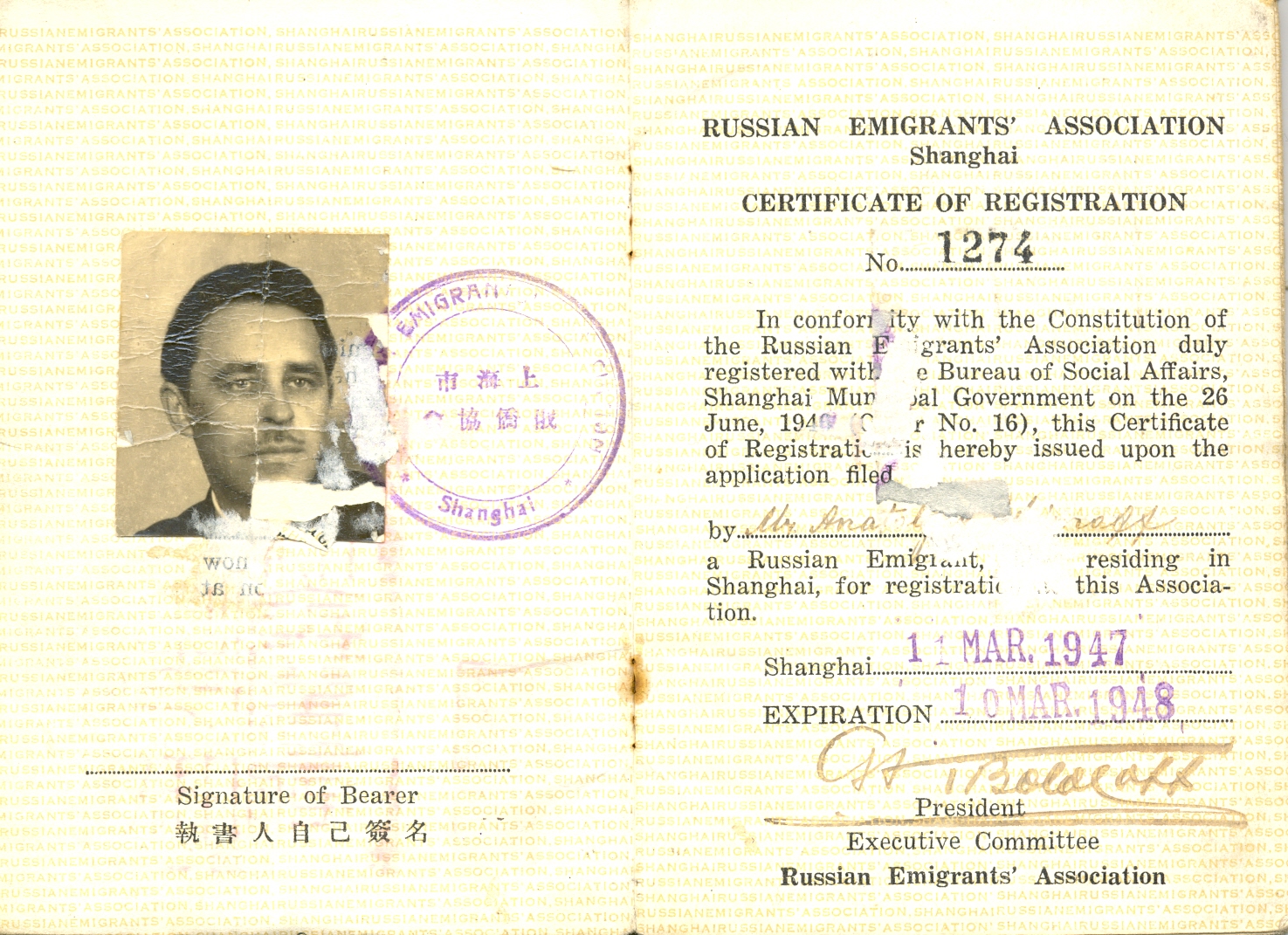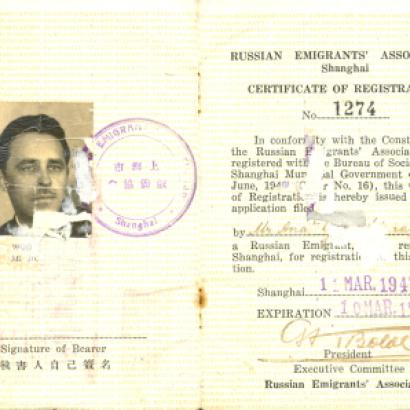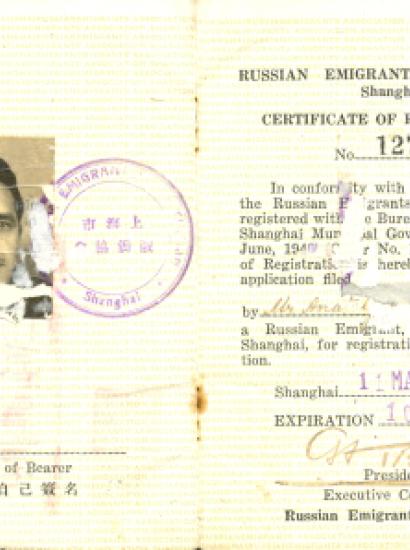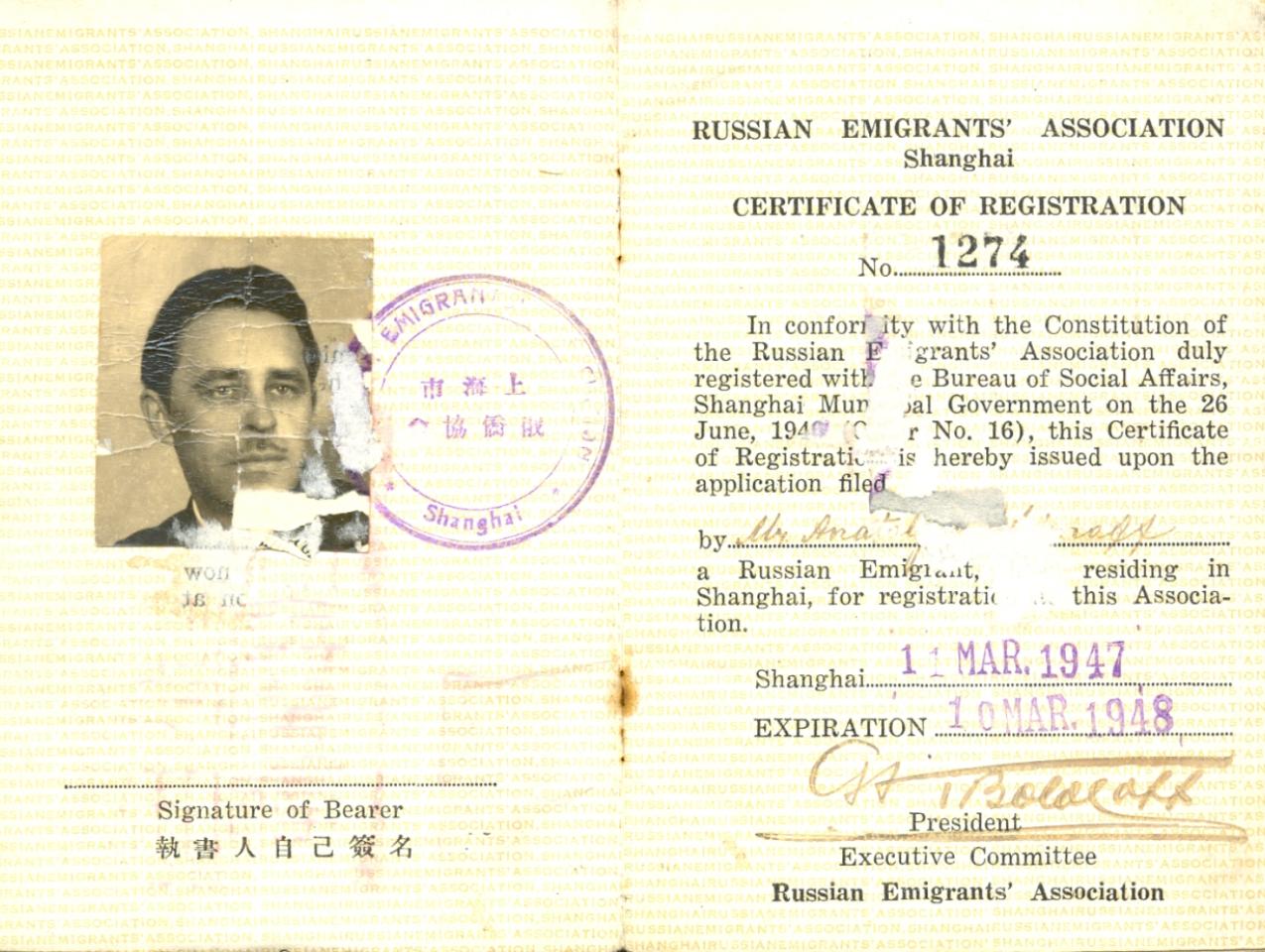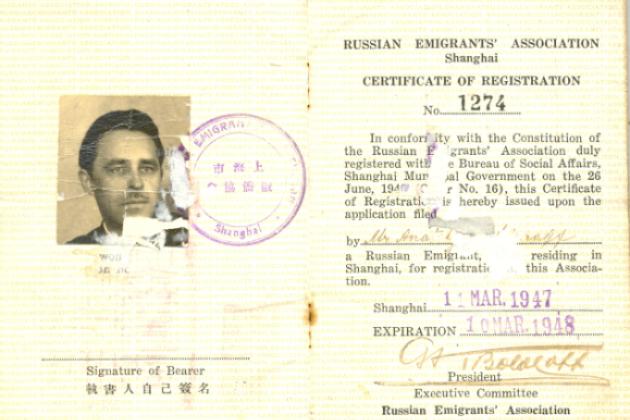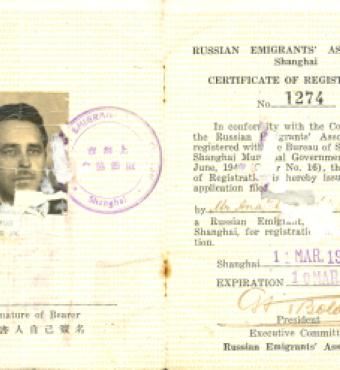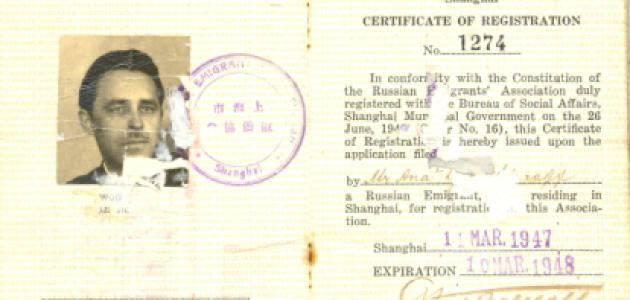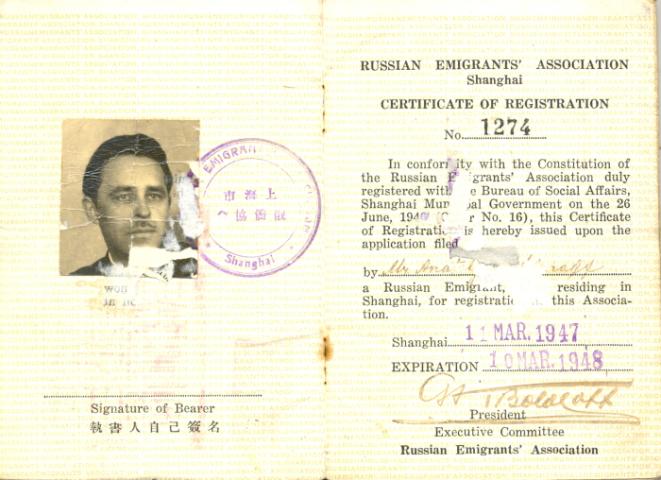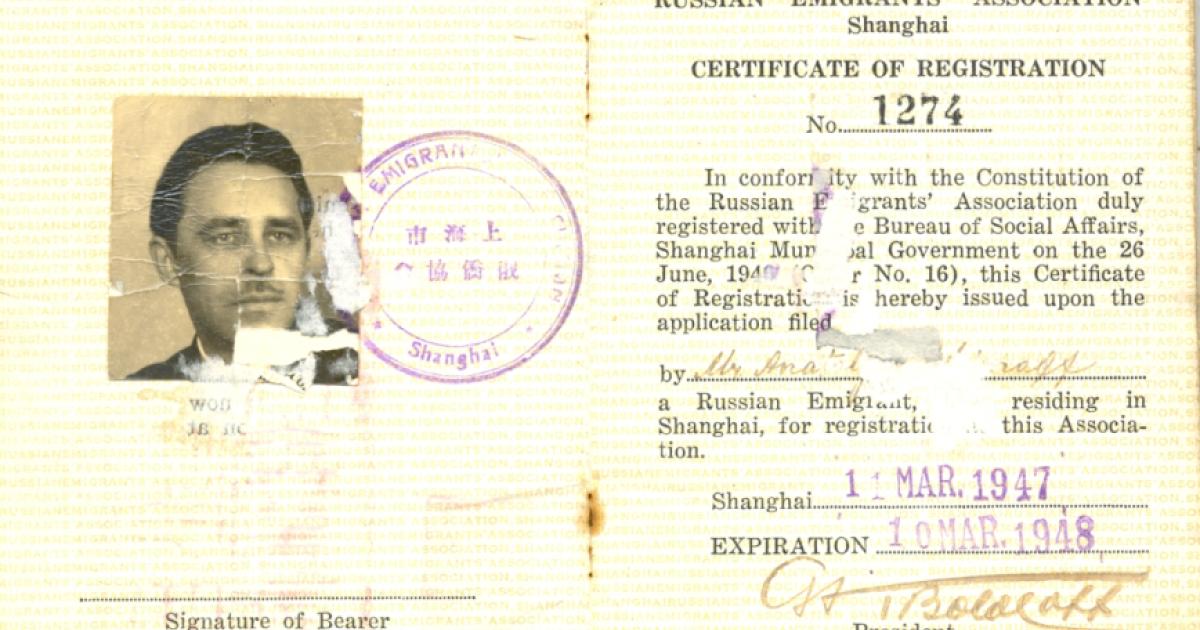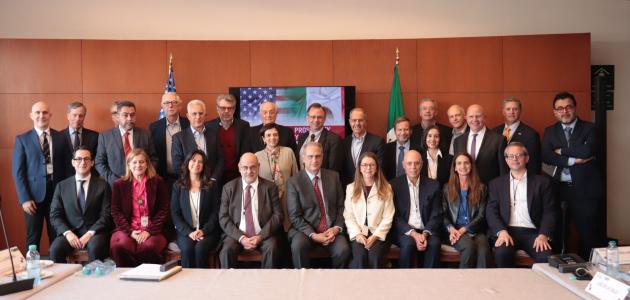Hoover Library & Archives recently acquired the papers of Anatole Efimoff (1897–1981), which provide a classic representation of a Russian refugee’s life in the Far East.
The identity cards, passes, and passports in the collection trace Efimoff’s life and career from the 1930s when, as a former officer of Admiral Kolchak’s army, he taught at the Russian orphans’ school in Shanghai. As a member of the Russian Emigrants’ Association, in 1949 he was evacuated to the Tubabao refugee camp, run by the International Refugee Organization in the Philippines. After spending about a year at the camp, he was able to enter the United States and begin a new life in Los Angeles.
The documents trace the vagaries of the Russian émigré’s life, escaping one political calamity after another. There was more, however, to Efimoff’s life than just his refugee status: an outstanding artist, he was the only Westerner permitted to sketch and paint in the Forbidden City of Beijing before the Communists took it over. While in China he painted more than a hundred views of the Forbidden City that were later exhibited at numerous venues in California.
On arrival in Los Angeles in 1951 he exhibited his watercolor paintings in “Palaces and Temples of Old Peking” at the Los Angeles City Hall Tower, commanding the attention of other California museums. With some 3,500 visitors, it was the most popular exhibit the city had ever sponsored; it was followed by a second exhibit, “Los Angeles Then and Now.” Although best known for drawing and painting architecture and miniatures (he was the only Western artist in China who had mastered that craft), Efimoff also did portraits, such as that of Chief Justice John Marshall; his painting of the birthplace of Chief Justice Earl Warren, hung at the County Courthouse in downtown Los Angeles, is representative of his style. A copy of the painting was sent to Warren; his thank-you note is among the papers in the collection. During and after the war, Efimoff was commissioned by numerous US officers to paint their portraits as well.
In addition to personal documents and clippings detailing his life and career, Efimoff’s papers contain correspondence and numerous photos depicting him, his studios, and Russian émigré life in China.




